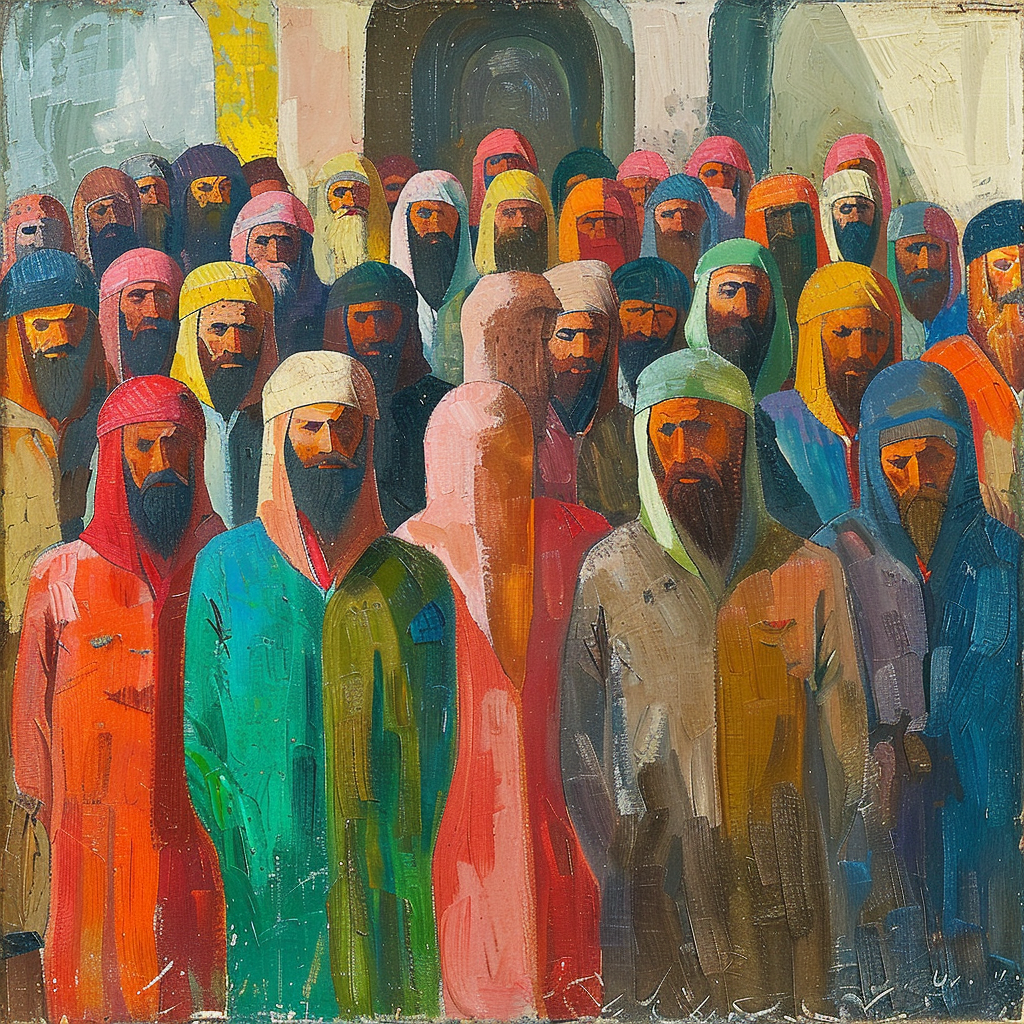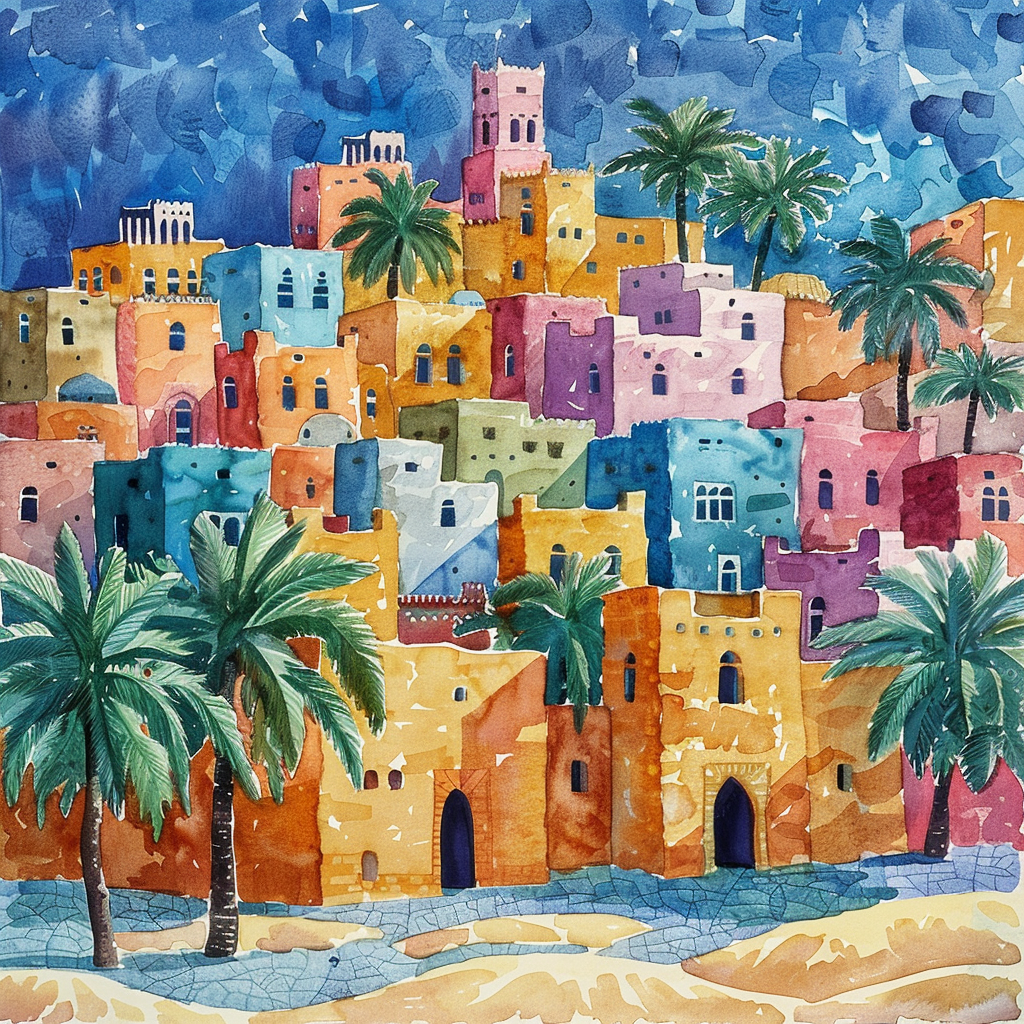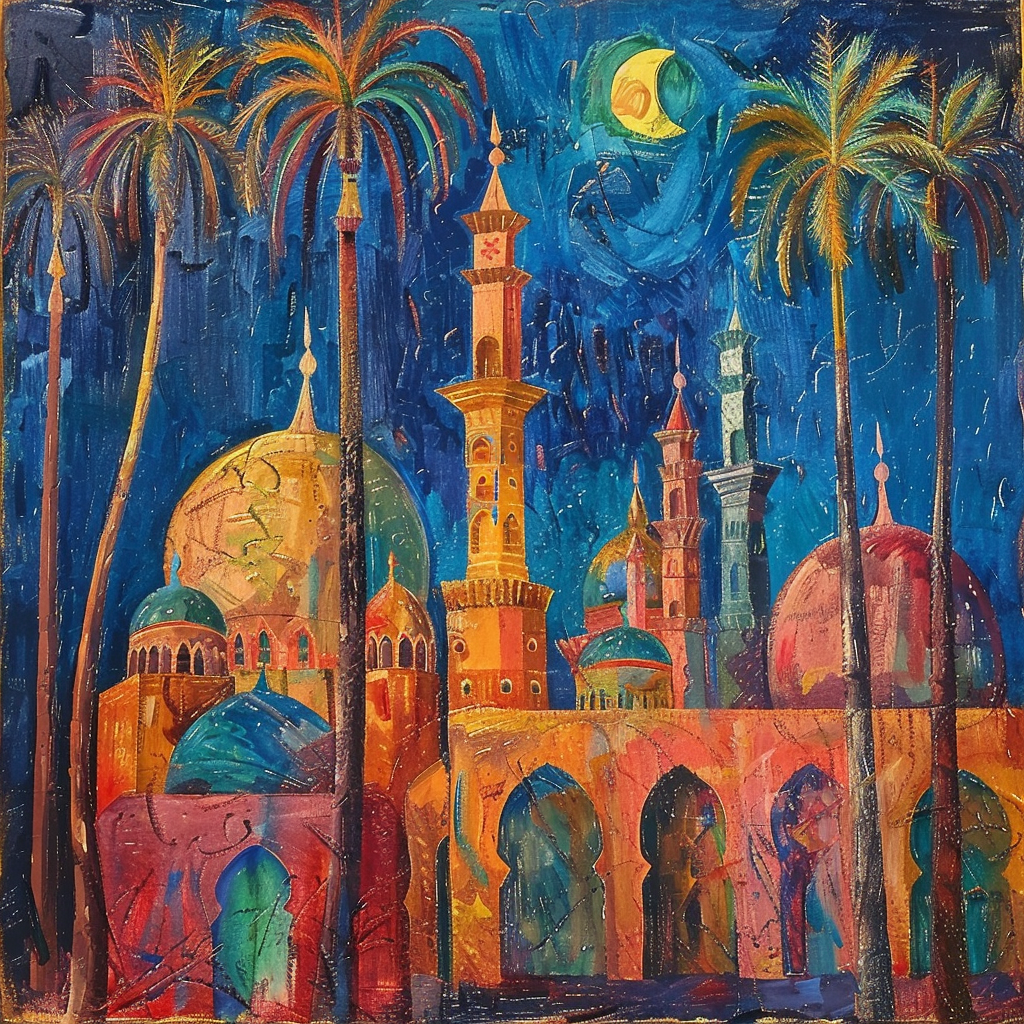The Islamic conquest and its subsequent spread across the Persian Gulf, particularly in Bahrain, stands as a pivotal chapter in the annals of Islamic history. This essay delves into the pre-Islamic era, marked by tribalism and polytheism, and transitions into the rise of Islam under the Prophet Muhammad’s leadership. Bahrain, known for its strategic position and rich pearl trade, became a focal point in Islam’s expansion. The narrative unfolds through the conquest led by Al-Ala’a Al-Hadrami, the introduction of Islamic governance, and the profound cultural and economic transformations that ensued. Key figures, battles, and diplomatic strategies illustrate the intricate process of integrating Bahrain into the Islamic realm, setting the stage for its role in the wider Persian Gulf region’s Islamic heritage.
Key Takeaways
- Bahrain was under the Sassanian Empire before the advent of Islam.
- The region’s inhabitants included Arabs, Persians, and others, showcasing its cultural diversity.
- Zoroastrianism was the predominant religion, alongside Christianity, Judaism, and polytheism.
- The Islamic conquest of Bahrain was marked by diplomacy rather than military conflict.
- Al-Ala’a Al-Hadrami’s negotiations were crucial for the peaceful transition to Islamic rule.
- Bahrain’s strategic location made it a vital trade hub in the Persian Gulf.
- The conversion to Islam in Bahrain was largely voluntary and facilitated through economic and social incentives.
Pre-Islamic Arabia
Before the advent of Islam, the Arabian Peninsula was a tapestry of disparate tribes and settlements, enveloped in what is known as the “Jahiliyyah” period. This era, characterized by “ignorance,” saw societies deeply entrenched in polytheistic beliefs and practices, with each tribe venerating its own pantheon of gods. Social order was governed by tribal affiliations, leading to frequent conflicts over resources, honour, and revenge. Bahrain, situated off the eastern coast of the Peninsula, emerged as a significant trading and religious hub during this time. Its economy thrived on the pearl trade, attracting merchants from across the region and beyond. The island also hosted a diverse religious landscape, with various temples dedicated to the worship of Arabian and Mesopotamian deities, reflecting its multicultural and economic significance.
Before the Islamic conquest, Bahrain was under the control of the Sassanian Empire, which was the last pre-Islamic Persian empire, ruling from 224 to 651 AD. The Sassanian governors administered the region, which was a part of the broader Persian imperial network. Bahrain, known as “Awal” at the time, was a notable center for the ancient religion of Zoroastrianism, which was the state religion of the Sassanian Empire.
The inhabitants of Bahrain before the Islamic conquest were a mix of Arabs, Persians, and various other ethnic groups due to its position as a trading hub. The predominant religion was Zoroastrianism, reflecting Persian influence, but there was also a significant presence of Christianity, Judaism, and local polytheistic practices among the population. The religious diversity in Bahrain was a testament to its cosmopolitan nature and its role as a crossroads of different cultures and trade routes.
Rise of Islam
The inception of Islam in the early 7th century marked a profound transformation in Arabian society. The Prophet Muhammad’s message of unity under one God, social justice, and community welfare gradually attracted followers, culminating in the formation of a cohesive Muslim community. The early years of Islam were marked by resistance and conflict, where the nascent Muslim community defended its faith against the Quraysh tribe of Mecca. These battles not only solidified Muhammad’s leadership but also demonstrated the strategic and military acumen of the Muslims, setting the stage for further expansions.

Strategic Importance of Bahrain
Bahrain’s significance in pre-Islamic and early Islamic times cannot be overstated. Geographically, the island’s location in the Persian Gulf placed it at the crossroads of major trade routes connecting the Arabian Peninsula with the Indian subcontinent and Mesopotamia. This strategic position facilitated not only economic prosperity through trade but also cultural exchanges, making Bahrain a melting pot of different traditions and beliefs. Economically, the island’s pearl trade was renowned, contributing to its wealth and attracting traders and settlers. The diverse religious practices in Bahrain before Islam’s arrival underscored its role as a centre of worship and pilgrimage, which would later become pivotal in the spread of Islam across the region.
The Conquest of Bahrain
Military Campaign Overview
The Islamic conquest of Bahrain, led by Al-Ala’a Al-Hadrami under the directive of the Prophet Muhammad, marked a significant milestone in the early Islamic expansion. Around 628 AD, following a series of correspondences and strategic preparations, the Muslim forces embarked on a mission to bring Bahrain under the fold of Islam. Unlike the conquests in the Arabian Peninsula, which often involved direct military engagement, the approach to Bahrain highlighted a blend of military prowess and diplomatic negotiation. The strategic use of naval power, a testament to the evolving military strategies of the Muslims, played a crucial role in establishing control over the region. The siege and subsequent submission of Bahrain were not solely military victories but also diplomatic successes, showcasing the Islamic leadership’s preference for peaceful surrender and integration.
Key Figures
Central to the conquest was Al-Ala’a Al-Hadrami, whose leadership and diplomatic skills were instrumental in the peaceful transition of Bahrain to Islamic rule. Appointed by the Prophet Muhammad, Al-Hadrami’s negotiations with the local rulers of Bahrain were pivotal. His ability to convince them of the benefits of embracing Islam, coupled with assurances of religious freedom and economic stability under Islamic governance, facilitated the smooth incorporation of Bahrain. The local rulers, recognizing the advantages of aligning with the Muslims and impressed by the respectful and fair treatment promised, played a significant role in the peaceful conversion of their territories.
One of the most interesting anecdotes about the advent of Islam in Bahrain is related to the acceptance of Islam by the local ruler at the time, Al-Mundhir Ibn Sawa. It is said that Prophet Muhammad sent Al-Ala’a Al-Hadrami as an envoy to Bahrain with a letter inviting Al-Mundhir to embrace Islam. Impressed by the message and the Prophet’s diplomatic approach, Al-Mundhir and many of his subjects converted to Islam. This event is often cited as a prime example of the peaceful spread of Islam through diplomatic means and the importance of communication in the early Islamic conquests.
Naval Power and Tactics
The Islamic conquest of Bahrain is notable for its emphasis on naval power, underscoring the strategic shift in military tactics to accommodate the geographical and logistical challenges posed by the island. The deployment of naval forces highlighted the Muslims’ adaptability and strategic thinking, essential for controlling the Persian Gulf’s trade routes. This naval engagement not only secured Bahrain but also set a precedent for future Islamic naval expeditions, demonstrating the importance of maritime dominance in expanding and securing the Islamic state’s borders. The successful use of naval power in the conquest of Bahrain exemplifies the early Islamic leadership’s foresight in utilizing diverse military strategies to achieve their objectives, paving the way for further expansions across the region.
The Spread of Islam in Bahrain and the Persian Gulf
The spread of Islam in Bahrain and the surrounding Persian Gulf region was characterized by a multifaceted approach, combining diplomatic missions, trade relationships, and social integration strategies. Diplomatically, Muslims engaged in peaceful negotiations and treaties with tribal leaders, ensuring a seamless transition to Islamic rule. These agreements often included clauses that respected the rights and traditions of the local populations, fostering a sense of security and acceptance among the newly converted communities.
Trade played a pivotal role in the dissemination of Islamic beliefs and practices. Muslim traders, renowned for their honesty and fair dealings, established extensive networks across the region. Through these commercial interactions, Islamic cultural and religious practices were introduced to diverse societies, facilitating the organic spread of the faith. The economic prosperity under Islamic rule, coupled with the zakat system—a form of almsgiving treated in Islam as a religious obligation or tax—further incentivized conversions, as it promoted social welfare and reduced economic disparities.
Social integration, including intermarriages between Muslims and local populations, served as another crucial vector for Islam’s spread. These unions not only cemented alliances but also facilitated the assimilation of Islamic customs and values within local communities. The practice of intermarriage helped in creating a cohesive society that shared common religious beliefs and cultural practices, thereby strengthening the Muslim community’s social fabric.
Islamic Governance and Law
With the successful spread of Islam, Bahrain witnessed the establishment of Islamic governance and the introduction of Sharia law. This transition marked a significant shift in the legal and administrative frameworks of the region. The implementation of Sharia law provided a unified legal system that addressed both civil and religious matters, contributing to societal stability and justice.
The governance structure in Bahrain and the Persian Gulf region adapted the Caliphate system, with appointed governors or caliphs overseeing administrative, judicial, and military affairs in accordance with Islamic principles. This system facilitated efficient governance and the implementation of Islamic laws, ensuring the welfare of the Muslim ummah (community). The introduction of Qadi (judicial) roles, responsible for adjudicating disputes and legal matters according to Islamic jurisprudence, further underscored the comprehensive integration of Islamic principles into the societal framework.
Conversion Patterns
The conversion to Islam in Bahrain and the Persian Gulf region was gradual, respecting the existing social and cultural dynamics. Unlike forced conversions, the process in Bahrain emphasized persuasion and the demonstrable benefits of Islamic governance—such as justice, social equality, and economic prosperity. This approach allowed for the organic growth of the Muslim population, with many conversions occurring over generations rather than through immediate shifts.
Economic incentives also played a role in the conversion process. The Islamic economic system, characterized by fair trade practices, zakat, and the abolition of interest (riba), offered a more equitable economic model. Additionally, the distinction between the tax obligations of Muslims (zakat) and non-Muslims (jizya) provided financial incentives for conversion, though it was the overall social and spiritual appeal of Islam that ultimately motivated most conversions.

Cultural and Economic Implications
The Islamic conquest of Bahrain brought significant changes to the region’s trade and commerce. The introduction of Islamic principles to trading practices, emphasizing honesty, integrity, and the prohibition of interest (riba), fostered a trustworthy trading environment. This ethical approach attracted merchants from various regions, enhancing Bahrain’s status as a trading hub. The strategic location of Bahrain in the Persian Gulf further leveraged its position on the trade routes between the Arabian Peninsula, the Indian subcontinent, and Mesopotamia, facilitating the flow of goods such as spices, textiles, and pearls.
One of the notable economic policies under Islamic rule was the encouragement of trade through the protection of merchants and the standardization of weights and measures. These measures not only boosted local and regional commerce but also integrated Bahrain more closely into the broader Islamic economy. The result was a vibrant marketplace that was both diverse and dynamic, contributing to the prosperity and stability of the region.
Influence on Local Cultures
The Islamic conquest had a profound impact on the cultural landscape of Bahrain and the Persian Gulf. The spread of the Arabic language as the lingua franca of the Islamic Empire facilitated communication and cultural exchange across vast territories. This linguistic shift had lasting effects on local dialects, literacy rates, and the transmission of knowledge.
Islamic art and architecture began to flourish in Bahrain, reflecting the fusion of local traditions with Islamic aesthetics. The construction of mosques and fortifications followed Islamic architectural principles, incorporating features such as minarets, domes, and calligraphy. These structures served not only as places of worship and community gathering but also as symbols of the Islamic cultural and spiritual identity.
The influence of Islamic culture extended beyond architecture and language, permeating various aspects of daily life, from dress codes to social customs. Festivals and religious observances, such as Eid al-Fitr and Eid al-Adha, introduced new traditions that became integral to the region’s cultural heritage. The adoption of Islamic practices led to a cohesive society that, while diverse, shared common values and beliefs, fostering a sense of unity and identity among the inhabitants of Bahrain and the Persian Gulf region.
Bahrain in the Islamic World
The incorporation of Bahrain into the Islamic world had significant long-term implications for the region’s religious, cultural, and political landscape. As an early adopter of Islam, Bahrain played a crucial role in the spread of the faith across the Persian Gulf and beyond. Its strategic position and established trade networks facilitated the dissemination of Islamic teachings and exchange of ideas, goods, and cultures between diverse regions. Bahrain’s contribution to Islamic jurisprudence and scholarship, through the establishment of religious schools and the hosting of scholars, further cemented its status as a centre of learning and spiritual guidance within the Islamic world.
The diplomatic relations Bahrain developed with emerging Islamic empires and neighbouring non-Muslim states were instrumental in promoting peace and stability in the region. By serving as a model of Islamic governance and cultural integration, Bahrain influenced the political and religious dynamics of the Persian Gulf, fostering a sense of unity and shared identity among its inhabitants.
Legacy of Islamic Rule
The legacy of Islamic rule in Bahrain and the Persian Gulf is evident in the region’s contemporary social, political, and cultural fabric. The foundations of Islamic governance, law, and education established during the early years of Islam continue to shape state formation and identity. The legal and administrative systems, grounded in Sharia law, have influenced the development of modern legal frameworks within the Gulf states.
Furthermore, the enduring influence of Islamic culture can be seen in the region’s art, architecture, language, and social customs. The architectural heritage, with its distinctive Islamic motifs and designs, continues to be a source of pride and identity for the people of Bahrain and the Persian Gulf. The Arabic language, enriched by centuries of literary and scholarly contributions, remains the primary medium of communication and cultural expression.
The Islamic conquest of Bahrain and its aftermath played a pivotal role in shaping the religious, cultural, and political landscape of the Persian Gulf region. Bahrain’s evolution from a regional trading hub to a key player in the spread of Islam illustrates the dynamic interplay of military strategy, religious fervour, and cultural exchange. The legacy of Islamic rule in Bahrain and the Persian Gulf endures, influencing contemporary social norms, legal systems, and regional politics.
FAQ
Q: Who was ruling Bahrain immediately before the Islamic conquest?
A: The Sassanian Empire was in control, with local governors overseeing the region.
Q: What was the main religion in Bahrain before Islam?
A: Zoroastrianism, reflecting Persian influence, was the main religion.
Q: Were there any battles during the Islamic conquest of Bahrain?
A: No, the conquest of Bahrain was largely peaceful, with diplomacy playing a key role.
Q: How did the inhabitants of Bahrain react to the spread of Islam?
A: Many inhabitants voluntarily converted to Islam, influenced by the peaceful and diplomatic efforts of Muslim envoys.
Q: What role did Bahrain play in the early Islamic state?
A: Bahrain became a key center for trade, Islamic governance, and religious scholarship.
Q: How did the Islamic conquest affect Bahrain’s trade?
A: Islamic rule enhanced Bahrain’s position as a trading hub, integrating it further into the broader Islamic economy.
Q: What is one interesting anecdote about the advent of Islam in Bahrain?
A: The peaceful conversion of the local ruler, Al-Mundhir Ibn Sawa, to Islam, facilitated by the diplomacy of Al-Ala’a Al-Hadrami, is a notable event.
Q: Does the legacy of Islamic rule still influence Bahrain today?
A: Yes, the legacy of Islamic rule continues to shape Bahrain’s cultural, social, and political identity.

